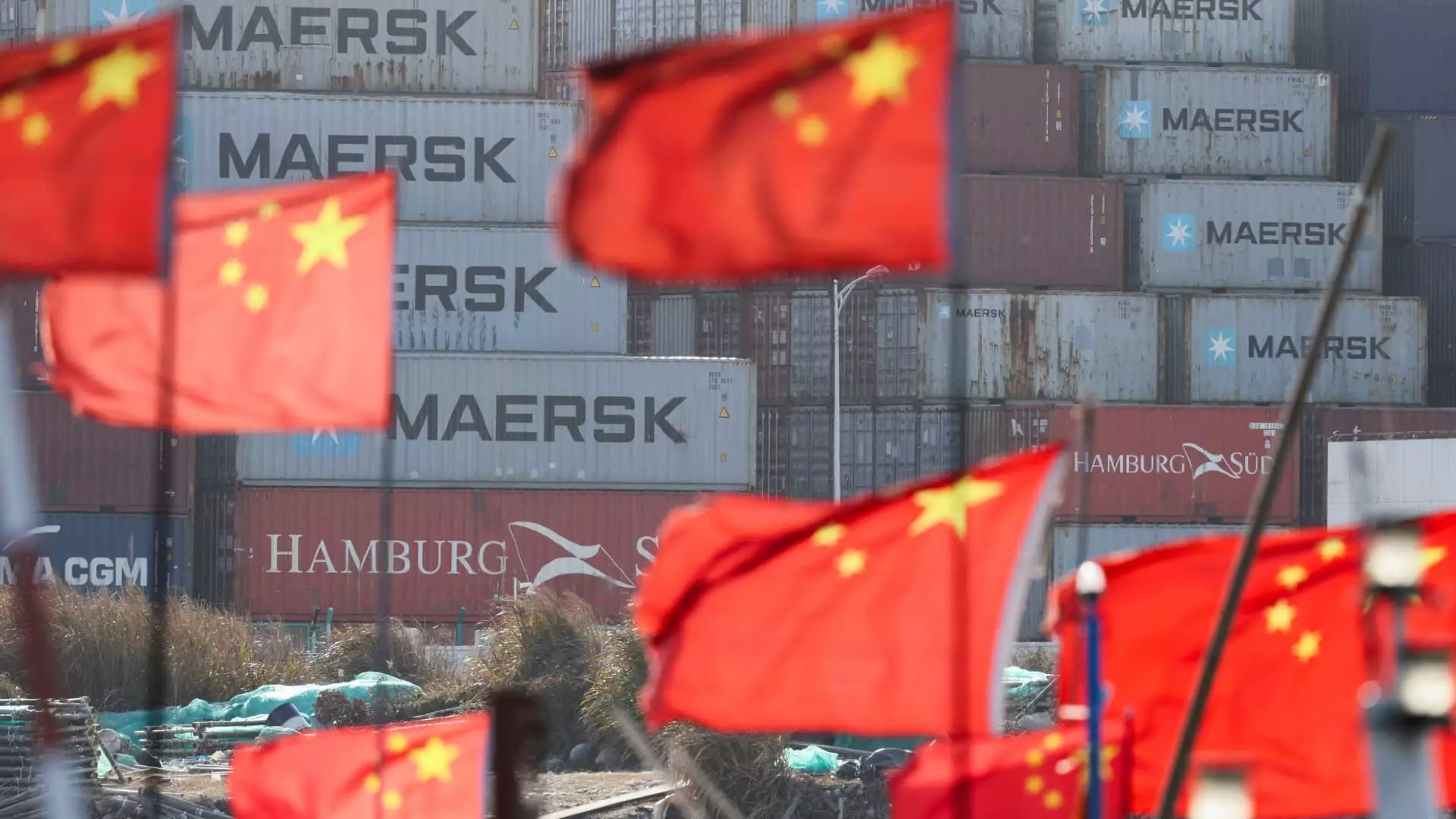As the global economy continues to wobble amidst political tensions and trade disputes, the recent imposition of U.S. tariffs on Chinese goods has sent shockwaves across international markets. President Trump’s announcement of punishing new tariffs—soaring to 34%—is more than a mere economic maneuver; it’s a declaration of war on existing trade norms. At its roots, it reflects a deeper narrative: nations redefining their positions on the global stage and China’s complex response to maintain its standing as an economic powerhouse.
The U.S. administration’s strategy not only targets China but extends its reach to major Asian economies and the European Union, putting an enormous strain on international trade relations. Chinese exports have already been hit by a collective 20% in tariffs this year, mounting to a staggering 54% overall. This unprecedented rate showcases an aggressive move that places U.S.-China relations into a precarious balance, compelling China to rethink its trade strategies with urgency.
The Call for Domestic Resurgence
In the face of economic adversity, China’s response has showcased its resilience. Rather than retaliating in kind with another wave of tariffs, Chinese officials have emphasized a path toward domestic economic revival. This apparent shift in strategy, outlined thoughtfully by analysts like Bruce Pang from CUHK Business School, suggests a long-term vision of self-reliance focused on boosting domestic consumption and diversifying export markets.
Domestic stimulus has become a mantra for Chinese economic strategists. Since the pandemic, where global supply chains fractured, the demand for a strong internal market has never been more pronounced. The Chinese government has moved to increase fiscal deficits, support private sector growth, and push beyond mere product exports. This multidimensional approach reflects a calculation that highlights adaptability in times of adversity, straying from the outdated dependence on export-led growth.
The New Trade Relationships
Another notable aspect of China’s response has been its determination to forge new trade relationships, particularly in Southeast Asia. The formation of the Regional Comprehensive Economic Partnership (RCEP), which has positioned China at the helm of Asia’s economic future, offers both opportunities and challenges. By aligning itself more closely with neighboring economies, China is able to pivot away from an over-reliance on U.S. markets and effectively weather the storm of tariffs.
Trade experts like Cameron Johnson assert that the strategic reorganization of trade routes is indicative of China’s savvy understanding of the global marketplace. Its expansion into Southeast Asian markets does not merely compensate for losses incurred from tariffs; instead, it represents a calculated strategic move aimed at reestablishing its role in global supply chains. Crucially, China’s self-assured expansion into these regions contradicts the perception that U.S. tariffs would diminish its standing in global trade—a miscalculation by the Trump administration.
The Economic Resilience Indicated by Investments
China’s economic response has also been signaled through its commitment to support the domestic technology sector. The recent gathering of President Xi Jinping with tech entrepreneurs serves as a stark reminder of how essential innovation and investment in technology are to China’s long-term goals. Post-tariff economic strategies will inevitably rest upon the backbone of technological advancement, showcasing a robust vision aiming for a forward-looking China.
This approach should not be dismissed lightly. Leaders like Macquarie’s Chief China Economist Larry Hu underline that maintaining a strong yuan against the dollar and reinforcing local markets is critical for long-term economic stability. These measures not only steadied the Chinese economy against external shocks but also reaffirmed the leadership’s intention to prioritize growth in challenging times.
The Implications of Retaliatory Measures
The temptation to engage in retaliatory tariffs remains a persistent pressure point for the Chinese government. However, a measured approach becomes increasingly clear in strategic discussions. Rather than focusing solely on punitive measures against U.S. businesses operating in China, the leadership appears intent on using diplomatic negotiations and subtle economic pressures, like blacklisting or strategic export controls, as tools for maintaining its influence.
Ultimately, the narrative emerging from China’s response to U.S. tariffs reveals a nation that refuses to be cornered. Instead, it exhibits a keen desire to maneuver through the complexities of international trade pressures while simultaneously fostering its economy. The path China has chosen embodies the very essence of resilience—a quality that remains a central theme in their ongoing story against the backdrop of geopolitical conflict and economic challenge. Whether this strategic orientation will result in sustainable growth will be something to watch as international dynamics continue to shift in this post-pandemic landscape.


Leave a Reply